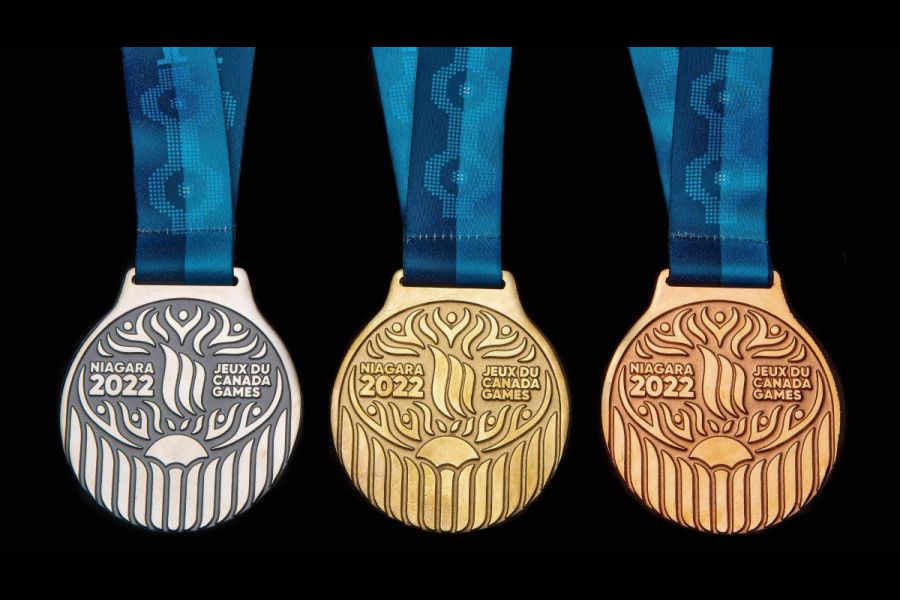Artist sought to evoke all of Niagara through symbolism
The mighty Falls, the history of a region, its character and the characters who call it home. All these things and more are part of the design of the medals for the upcoming Canada Summer Games.
“What I wanted to do was I wanted to celebrate Niagara as a whole,” medal designer Sean O’Melia said at medal unveiling ceremony last week at Ravine Estate Winery.
“So what I did was I separated it into 13 different waves,” said O'Melia, who attended high school in Niagara-on-the-Lake.
The intricately designed medals incorporate a plenty of symbolism to evoke the region and the country at large. There was no finer place to begin than that natural wonder of the world in our backyard: thunderous Niagara Falls.
The 13 waves at the bottom of the medal are representative of the Falls, but O’Melia also used the number of waves to represent a further trinity.
That is the 13 provinces and territories, the 13 Niagara municipalities hosting the Games and, crescent-shaped no less, the 13 celebrations of the moon the Haudenosaunee and Anishinabe people, the original inhabitants of this land, have each year.
“So the second feature is the sun that is behind the Falls. I wanted this to represent the agricultural focus we have here in the Niagara region,” O’Melia said.
Also on the medal are seven human figures surrounding the sun and logo, frozen in a moment of celebration, their arms in the air.
“I wanted to tie in the seven generations and the importance of tending to the land and leaving it for the next seven generations,” he said, evoking a long-held Haudenosaunee belief.
The medal also represents the Niagara Escarpment, which O’Melia referred to as the backbone of Turtle Island, an Indigenous term for the North American continent.
Depth was used to create this effect and the designer said he wanted to make it seem like the Falls were pouring out of the medal.
The final design component of the medal is the lanyard itself, on which the medal hangs.
The lanyard is designed in the style of a wampum belt, an ancient form of record making in Haudenosaunee, Onondaga and other Indigenous cultures. They have been used on several occasions to embody treaties made between Indigenous people and settlers.
“The speaker puts the words of the agreement into the wampum as the strings or belts are woven together. Each speaker thereafter uses the wampum to remember the initial agreement and the history that has happened to date. To us, the belts are our living history,” according to Onondaganation.org.
The festivities at Ravine had an air of the celebration of co-operation.
“The Canada Games exist to strengthen the fabric of Canada through the power of sport,” said Courtney Pollock, a senior adviser for the games.
“They also spark greatness in the next generation of athletes and leaders. There’s no doubt that these medals will do the same by igniting that competitive spirit in athletes from coast to coast to coast.”
Games chair Doug Hamilton said a blind call for art submissions for the medal design was put out two years ago.
“And, ironically, a resident of St. Catharines and a graduate of Niagara College was chosen,” he said, referring to O’Melia.
“These medals and their lanyards will undoubtedly provide the many deserving medalists from the Canada Games with an honour that they’ll cherish for many years to come.”
“They’ll remember this medal as one of the first national medals that they won.”
Hamilton said the celebration around the medal and the approaching Games serve as a “premonition of what is going to be happening over the next 100 days and the 16 days of the Games.”










